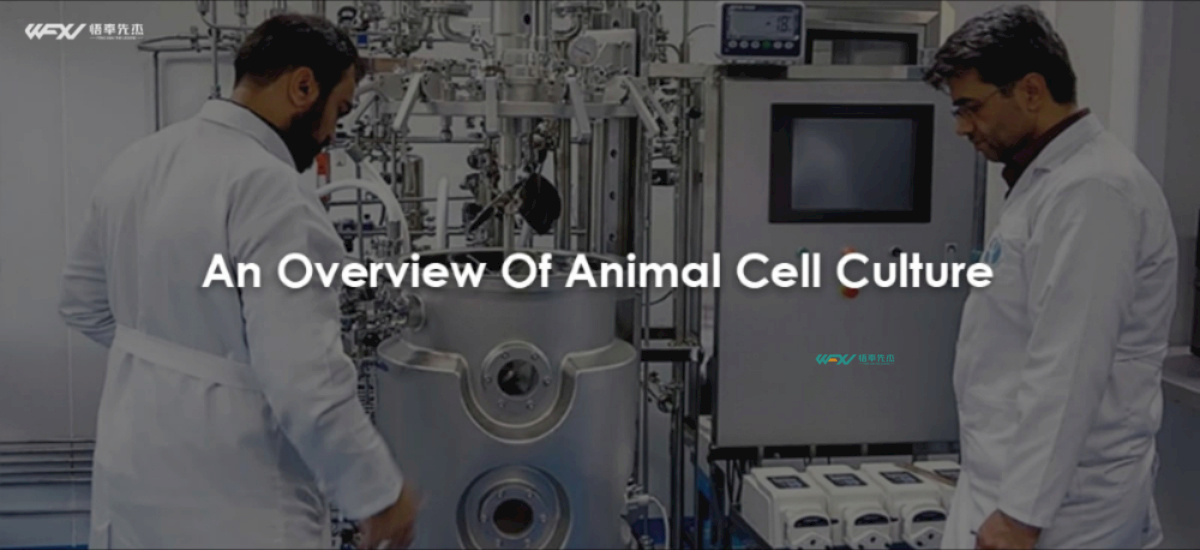
With the development of genetic engineering, a variety of highly effective drugs, sensitive diagnostic reagents and biotechnology products have been produced through the culture of animal cells. Currently, it is developing into a high-tech industry in this direction.
Since animal cells are very different from microbial cells, there are strict requirements for in vitro culture. For example, animal cells are very sensitive to shear, and the design of the reactor cannot be as high as microbial cells.Therefore, traditional microbial cell reactors should be modified to be suitable for animal bioreactors. It is very important and urgent to develop new bioreactors based on the characteristics of animal cells.
Animal cell culture process
Introduction to animal cell culture:
Animal cell culture is a process of removing cells from the animal body and dispersing them into single cells, simulating the growth environment in the body, and allowing the cells to continue to survive, grow, proliferate and maintain structure and function outside the body under sterile, moderate temperature and rich nutritional conditions. door technology.
In vitro culture can be divided into primary culture and subculture. Primary culture refers to the process of primary culture of cells removed from the body. Cultured cells that proliferate for about 10 generations are called primary cells; continuing to transfer culture from primary cultured cells is called subculture.
Types of in vitro culture of animal cells
(1) Suspension culture
It refers to the process of cells growing in free suspension in a culture vessel. It is mainly used for non-adhesion-dependent cells. Such cells do not need to adhere to the wall to grow in vitro and can be cultured in suspension in the culture medium using microbial methods.
It refers to the process of cells growing in free suspension in a culture vessel. It is mainly used for non-adhesion-dependent cells. Such cells do not need to adhere to the wall to grow in vitro and can be cultured in suspension in the culture medium using microbial methods.
(2) Adherent culture
Refers to cell culture that must be attached to the surface of a solid medium to grow. It is mainly suitable for attachment-dependent cells (also known as adherent cells). Most animal cells belong to this type.
The growth of this type of cells needs to be attached to certain solid and semi-solid surfaces with an appropriate amount of positive charge. After the cells are attached and grown, they no longer retain their original form and are generally single in form, mainly including fibroblast type, epithelial type, Wandering type and polymorphic type, etc.
(3) Immobilized culture
This type of culture is suitable for both anchorage-dependent cells and anchorage-independent cells. It has the advantages of high cell growth density, strong resistance to shear force and resistance to contamination.
Due to the different cells being cultured, the methods of immobilization and culture are also different. Generally, collagen embedding is used for anchorage-dependent cells, while calcium alginate embedding is commonly used for anchorage-independent cells. Commonly used cell immobilization methods include adsorption, covalent attachment, ionic/covalent cross-linking, encapsulation, and microencapsulation.
animal cell culture bioreactor
Large-scale culture of animal cells requires special reactors. Unlike microorganisms and plant cells, animal cells have no cell wall on the outer layer, have a fragile plasma membrane, are sensitive to shearing, and have strict requirements for in vitro culture environments.
Therefore, traditional microbial fermentation reactors cannot be used for large-scale culture of animal cells. Low shear effect, good transfer effect and mechanical properties are the principles that must be followed in the design or improvement of such reactors.
Since the 1970s, bioreactors for cell culture have developed greatly, with more and more types and larger scales. However, the main structural forms of reactors are still stirred, airlift and fixed bed.
In addition to culture for the purpose of artificial mutagenesis, the design principle of bioreactors used for animal cell culture should be to simulate the growth environment of the culture in the organism as much as possible. Due to the particularity of animal cell growth, special attention needs to be paid to the reactor structure design and the selection of special carriers.
Bioreactors for animal cell culture generally include: airlift bioreactor, hollow fiber tube bioreactor, fluidized bed bioreactor, stirred tank bioreactor, stacked bed bioreactor, disposable bioreactor, membrane Bioreactors, etc.